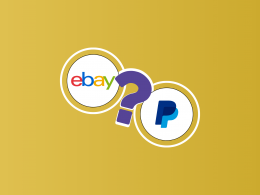Invoicing is crucial for every business, yet conventional paper-based invoicing methods are frequently time-consuming and susceptible to errors. Electronic invoicing has emerged as a prominent alternative with the progression of digital technology and the implementation of new government regulations. It is rapidly becoming the favored choice for businesses aiming to simplify their invoicing procedures, cut down on expenses, and enhance overall efficiency. This article delves into e-invoicing, providing a comprehensive overview of its intricacies.
Key takeaways:
- Electronic invoicing (e-invoicing) is a digital alternative to traditional paper-based methods, streamlining processes for businesses.
- It involves structured digital formats, differing from mere digitization, and gained prominence globally in the early 2000s.
- Key considerations for successful implementation include commitment, choosing the right solution, integration, network reach, compliance, and onboarding partners.
- E-invoicing caters to various business interactions, such as B2B, B2C, and B2G, each requiring tailored strategies.
- Small businesses benefit from e-invoicing, ensuring regulatory compliance and strategic positioning in the digital landscape.
- While not federally mandated in the U.S., governments worldwide are making e-invoicing mandatory to enhance tax compliance.
- The future trends in e-invoicing include automation, AI, blockchain, wider adoption, mobile-friendliness, and increased emphasis on compliance and transparency.
Contents:
1. What is electronic invoicing or e-invoicing?
- Differentiating between traditional and electronic invoicing
- What can’t be considered an e-invoice?
- Invoicing evolution: A historical overview of e-invoicing
- Getting started
- A step-by-step breakdown of the e-invoicing process
- Key considerations for e-invoicing
- What is B2B, B2C, and B2G e-invoicing?
3. Do small businesses need to adopt electronic invoicing?
5. Importance and benefits of adopting e-invoicing for a business
6. Challenges of e-invoicing for a business
7. Best practices for security and data privacy in e-invoicing
8. The current state of e-invoicing in the U.S.
9. Future trends in e-invoicing
10. Modern e-invoicing systems: How to choose the best e-invoicing solution
11. Conclusion
12. FAQs
What is electronic invoicing or e-invoicing?
Electronic invoicing involves digitalizing the invoicing process, replacing traditional paper-based methods with electronic formats. This transformation streamlines the creation, submission, and processing of invoices, departing from conventional approaches’ manual and time-consuming nature.
Differentiating between traditional and electronic invoicing
The key distinction lies in the medium through which invoices are exchanged. In traditional invoicing, the reliance on paper documents often leads to time-consuming manual processes, making the entire system susceptible to errors and delays. Moreover, this method is prone to increased environmental impact.
On the contrary, e-invoicing leverages digital platforms, enabling businesses to send and receive invoices quicker and more accurately. This expedites the invoicing cycle and minimizes the likelihood of errors, fostering a more streamlined and reliable financial workflow.
Discover the ins and outs of ‘Online Invoicing for Small Businesses: Handling Invoice Management With Small Business Accounting Software‘ and elevate your business with invaluable insights – explore the article now!
What can’t be considered an e-invoice?
It’s crucial to dispel misconceptions about e-invoicing. E-invoices are not simply scanned versions of paper invoices; they go beyond mere digitization. True electronic invoicing involves creating, transmitting, and processing invoices in a structured digital format. Unlike their paper counterparts, e-invoices are machine-readable, allowing for automated processing and integration with other digital systems.
Here’s a quick overview of the most common types of invoices that are not considered e-invoices and how they compare:
- Unstructured invoice data issued in PDF or Word formats.
- Images of invoices such as jpg or tiff.
- Unstructured HTML invoices on a web page or in an email.
- OCR (Scanned paper invoices).
- Paper invoices are sent as images via fax machines.
Invoicing evolution: A historical overview of e-invoicing
The origins of e-invoicing trace back to the late 20th century, a period marked by the rapid integration of computers and digital technologies into business processes. Initial experiments with electronic invoices date back to the early 1990s, as companies began seeking alternatives to traditional paper-based methods. However, the true adoption of e-invoicing can be pinpointed to the early 2000s, when digital technologies became more accessible and widespread.
Pioneering pilot projects for e-invoicing found success in the Scandinavian countries, where the business community was open to innovation. 2004, for instance, Denmark emerged as a trailblazer by launching an electronic invoicing system for businesses. This experience inspired other nations and businesses, sparking a global shift toward embracing digital invoicing solutions.
In 2022, the countries that implemented mandatory invoicing included Egypt, France, Greece, India, Ireland, Italy, Jordan, the Netherlands, Norway, Poland, Portugal, Saudi Arabia, Spain, the United Kingdom, and Vietnam.
The goals behind the inception of e-invoicing were manifold. Businesses aimed to streamline their invoicing processes, reduce the costs associated with manual paperwork, and enhance overall operational efficiency. Additionally, environmental considerations played a role, as the digitalization of invoices contributed to reducing paper consumption, aligning with sustainability initiatives. As the technology matured, E-Invoicing evolved from an experimental concept to a mainstream practice, reshaping the landscape of financial transactions across industries.
How does e-invoicing work?
Digitalizing workflows in both customer and supplier invoicing is a key feature of e-invoicing, contributing to the streamlined management of Accounts Payable (AP) and Accounts Receivable (AR). This electronic invoicing method enhances the efficiency of financial operations by providing a systematic approach to the processing and handling of invoices.
Getting started
Getting started with e-invoicing involves a few key steps:
- Firstly, businesses need to select a reliable e-invoicing platform or software that aligns with their specific needs and industry requirements.
Explore the world of invoicing software tailored for small businesses in this guide: Invoicing Software for Small Business: Invoice Software for Small Businesses to Consider.
- Once the platform is in place, companies can integrate it with their existing accounting systems for seamless data transfer.
- Training employees on the new system is vital to ensure smooth adoption and maximize the benefits of e-invoicing.
- Regularly staying updated on the latest e-invoicing standards and best practices ensures continued optimization of the electronic invoicing process.
A step-by-step breakdown of the e-invoicing process
Whether you are creating and sending invoices to customers or receiving and handling invoices from suppliers, the e-invoicing process plays a pivotal role in streamlining operations.
Let’s explore the simple yet effective steps involved in creating/sending invoices to customers and receiving/handling invoices from suppliers through the seamless e-invoicing process.
Creating and sending e-invoices to customers
The process involves several simple steps in e-invoicing:
1. Generate invoice
Start by making an electronic invoice within an e-invoicing platform. This document is like a bill for the goods or services you provide to the customer.
2. Integrate and send data
After creating the invoice, send it to the customer using a secure and integrated system. This ensures that the information is accurate and reaches the customer reliably.
Create invoices with Synder
Whether you’re using Square, Stripe, or a combination of these payment platforms, and your accounting company is QuickBooks Online, Synder’s Invoicing feature can save you countless hours of sending invoices to your customers. There are many reasons why customers fail to pay their invoices, and the fact that this process is not always straightforward enough is high on the list.
Synder Invoicing software makes it a non-issue to send invoices that are a breeze to pay with a credit card — and it automatically accounts for both invoices and payments in your QuickBooks Online! You can easily create, schedule, and manage recurring invoices sent repeatedly at specific intervals. The feature is similar to the QuickBooks recurring invoice feature and has a convenient management tab.
Take advantage of the opportunity to optimize your business processes and explore Synder features with a free trial. To gain more insights and tips, consider taking part in the informative Weekly Public Demo offered by Synder. Elevate your financial management with Synder – where simplicity meets effective financial operations.
3. Validation
Before the invoice is sent out, an automated check ensures that it follows the rules and standards set by your business and relevant regulations.
4. Delivery to the customer
Once the invoice is validated, it is sent to the customer in their preferred format. This flexible approach caters to the customer’s invoicing preferences, making transactions quick and easy.
Moreover, if you want to receive instant payments from your clients and automate your books, the payment links feature can be a real helper. You need to generate a link and email it to your clients or insert it on your website/social network. This will turn your Instagram profile, a Facebook page, or a WhatsApp group into a sales channel.
Note: The Payment Links feature is available only for Stripe QuickBooks Online & Square QuickBooks Online integrations.
Dive deeper into this article: Payment Link Payments Benefits: How Customers Can Pay With Payment Links.
Receiving and handling invoices from suppliers
It involves a few simple steps:
1. Get invoice
Start by getting an electronic invoice from a supplier. This document is received directly into your financial system.
2. Process data
The system then organizes the invoice information in a structured way, preparing it for a closer look. This step ensures that everything is ready for review and validation.
3. Validation
Just like when sending invoices, there’s an automated check to ensure the received invoice follows the rules. This helps maintain accuracy and transparency in all transactions.
4. Record invoice
Once the invoice is validated, the system automatically records the information in your financial system. This makes it easier to manage payments and handle accounts payable, completing a smooth cycle of business transactions.
Want to learn more? Read an article: How to Send Stripe Invoice: Exploring Stripe Invoicing and Benefits of Stripe Invoices for Businesses.
Key considerations for e-invoicing
Implementing e-invoicing is a strategic decision that requires careful consideration and commitment from your company.

1. Commitment
The first crucial factor is to ensure that your organization is fully committed to the transition to electronic invoicing, as this commitment is foundational to the success of the implementation process.
2. Choosing the right e-invoicing solution
Choosing the right e-invoicing solution is another critical step. Evaluate different platforms and software options to find the one that aligns with your specific business needs and industry requirements. Consider factors such as user-friendliness, scalability, and the ability to cater to your organization’s unique invoicing processes.
3. Integration with existing systems
Integration with existing systems is paramount for a seamless e-invoicing implementation. The chosen e-invoicing solution should integrate effortlessly with your current accounting and financial systems to ensure smooth data transfer and avoid disruptions in your operational workflows.
4. Network
Consider the network reach of the e-invoicing solution. Ensure that it supports communication with a broad range of business partners and clients. A solution with a wide network reach enhances the efficiency of the e-invoicing process and facilitates smooth transactions with diverse stakeholders.
5. Compliance
Compliance with legal requirements is a non-negotiable aspect of e-invoicing implementation. Stay informed about your jurisdiction’s e-invoicing regulations, and ensure that the chosen solution adheres to these standards. This proactive approach not only ensures legal compliance but also mitigates the risk of potential issues down the line.
6. On-boarding business partners
On-boarding business partners is the final but crucial consideration. Collaborate with your suppliers, customers, and other stakeholders to facilitate a smooth transition to e-invoicing. Provide necessary training and support to ensure all parties can seamlessly adapt to the new electronic invoicing processes.
By addressing these key considerations, your organization can successfully navigate the implementation of e-invoicing, unlocking the numerous benefits of this modern financial practice.
Related reading: 5 Tips for Invoicing – Add Value without Adding Additional Time
What is B2B, B2C, and B2G e-invoicing?
B2B, B2C, and B2G e-invoicing represent distinct contexts within electronic invoicing, each catering to specific business interactions.

1. Business-to-Business
Business-to-business (B2B) e-invoicing involves the digital exchange of invoices between two businesses, streamlining transactions and fostering efficiency in the business-to-business ecosystem.
2. Business-to-Consumer
Business-to-consumer (B2C) e-invoicing, on the other hand, focuses on transactions between businesses and individual consumers. This approach is designed to accommodate individual consumers’ unique invoicing preferences and needs, simplifying the payment process for goods or services.
3. Business-to-Government
Lastly, Business-to-Government (B2G) e-invoicing centers around electronic invoicing processes between businesses and government entities. This specialized form of e-invoicing ensures adherence to government regulations and standards, enhancing transparency and compliance in financial transactions with public institutions.
Understanding these distinctions is pivotal for businesses as it allows them to tailor their e-invoicing strategies to the specific dynamics of their interactions with other businesses, individual consumers, and government entities.
Related reading: Invoicing: avoid these 8 issues that affect your cash flow
Do small businesses need to adopt electronic invoicing?
The adoption of electronic invoicing can be beneficial for businesses of all sizes. Although larger organizations might realize immediate cost savings and efficiency gains, small businesses can also enjoy advantages such as minimized paperwork, quicker payment processing, and enhanced accuracy.
Additionally, with global mandates on e-invoicing for tax compliance, small businesses adopting electronic invoicing ensure regulatory adherence, positioning themselves strategically in the digital business landscape.
Is e-invoicing mandatory?
Governments around the world are making e-invoicing mandatory for businesses in their jurisdictions. These requirements aim to update invoicing methods and prevent tax fraud. Businesses need to adjust their invoicing processes to meet these regulations by using digital solutions, maintaining data accuracy, and following specific formatting and data standards set by governments.
While adapting may pose initial challenges, the long-term advantages include better efficiency, fewer errors, and improved compliance with tax laws. It’s not a matter of ‘if’ but ‘when’ businesses must embrace these changes.
E-invoicing is not mandatory at the federal level in the United States. However, the regulatory landscape can change, and specific requirements may vary depending on the state and industry.
It’s essential to stay informed about any updates or changes in e-invoicing regulations at both the federal and state levels. Businesses are encouraged to check with relevant authorities or consult legal professionals to ensure compliance with the latest regulations regarding e-invoicing.
Benefits of adopting e-invoicing for a business
Adopting e-invoicing offers businesses many benefits that extend beyond the mere transition from traditional paper-based invoicing.
The importance of embracing electronic invoicing lies in its potential to revolutionize financial processes, enhance operational efficiency, and contribute to overall business growth.

Here are some key aspects highlighting the significance and benefits of adopting e-invoicing:
1. Operational efficiency
E-invoicing streamlines the entire invoicing process, reducing the time and effort required for manual tasks. Automation of invoicing tasks minimizes the risk of errors, leading to more accurate financial records.
2. Cost savings
The shift to e-invoicing reduces costs associated with paper, printing, and postage, contributing to significant savings over time. Faster payment cycles, facilitated by electronic processes, improve cash flow, supporting overall financial health.
3. Environmentally friendly
By eliminating the need for paper-based invoices, businesses contribute to environmental sustainability. E-invoicing not only helps you reduce paper use and lower CO2 emissions; it also lowers operational costs and helps create a transparent, trustworthy brand reputation.
4. Faster payment processing
E-invoicing accelerates payment processing through electronic delivery and automated validation, leading to quicker receipt and payment cycles.
5. Improved accuracy
Automated validation of e-invoices reduces the likelihood of errors associated with manual data entry, enhancing the accuracy of financial records.
6. Enhanced security
Electronic invoicing platforms often incorporate robust security measures, safeguarding sensitive financial information and reducing the risk of fraud.
7. Global compliance
Many governments worldwide are moving towards mandating e-invoicing to enhance tax compliance. Adopting e-invoicing positions businesses to stay compliant with evolving regulatory requirements.
8. Business partner relationships
E-invoicing facilitates smoother interactions with business partners, as electronic processes are often more convenient and aligned with modern business practices.
9. Data insights & reporting
E-invoicing systems provide valuable data insights, supporting better financial analysis and reporting for informed decision-making.
10. Future-ready practices
As the business landscape evolves, adopting e-invoicing positions a company as forward-thinking and adaptable, ready to embrace digital transformations.
The advantages of adopting e-invoicing extend far beyond mere cost savings. From operational efficiency to improved data accuracy and environmental sustainability, businesses that embrace electronic invoicing are poised to reap many benefits that contribute to their overall success and competitiveness in the modern business landscape.
Challenges of e-invoicing for a business
While e-invoicing offers numerous benefits, businesses may encounter certain challenges during the adoption and implementation process.

1. Financial investment
Initial costs for technology and infrastructure may pose financial constraints for businesses transitioning to e-invoicing.
2. Integration complexity
Integrating e-invoicing systems with existing software or accounting platforms can be complex, requiring additional resources and expertise.
3. Security concerns
Ensuring the security of sensitive financial data during electronic transmission and storage demands robust cybersecurity measures.
4. Resistance to change
Stakeholders accustomed to traditional invoicing methods may resist the transition to e-invoicing, necessitating effective communication and training.
5. Regulatory compliance
Navigating diverse and evolving regulations related to e-invoicing poses a compliance challenge, requiring businesses to stay updated on industry and jurisdiction-specific requirements.
Addressing these challenges proactively is crucial to unlocking the long-term benefits of e-invoicing adoption for businesses.
Best practices for security and data privacy in e-invoicing
Implementing robust security and data privacy measures is paramount when adopting e-invoicing to safeguard sensitive financial information.

1. Encryption measures
Utilize encryption techniques for secure transmission and storage of electronic invoices, safeguarding confidential financial information.
2. Reputable e-invoicing platforms
Choose secure and reputable e-invoicing platforms with built-in authentication features to prevent unauthorized access.
3. Multi-factor authentication
Implement multi-factor authentication to add an extra layer of security, requiring users to verify their identity through multiple means.
4. Regular software updates
Ensure regular software and systems updates to patch vulnerabilities and stay resilient against emerging cybersecurity threats.
5. Employee training
Conduct regular cybersecurity training for employees involved in the e-invoicing process to enhance awareness and reduce the risk of human error leading to security breaches.
6. Adherence to regulatory guidelines
Adhere to industry standards and regulatory guidelines for data privacy, such as GDPR or HIPAA, to ensure legal compliance and foster stakeholder trust.
7. Regular audits & assessments
Conduct regular audits and assessments of e-invoicing security protocols to stay vigilant and continuously improve the cybersecurity posture of the business.
The current state of e-invoicing in the U.S.
The adoption of e-invoicing in the United States has been gradually increasing, driven by a combination of technological advancements, regulatory changes, and the recognition of the benefits it offers to businesses. Several factors contribute to the current state of e-invoicing in the U.S.
Regulatory landscape
While the U.S. does not have a federal mandate for e-invoicing, a growing emphasis on digital transformation and efficiency has prompted businesses to adopt electronic invoicing voluntarily.
Industry-specific initiatives
Certain industries, such as healthcare and government contracting, have witnessed increased adoption of e-invoicing due to specific regulatory requirements and initiatives aimed at improving transparency and reducing fraud.
Technological advancements
The advancement of technology, particularly cloud-based solutions and electronic data interchange (EDI), has made e-invoicing more accessible and feasible for businesses of all sizes.
Business process optimization
Many businesses in the U.S. recognize the potential for e-invoicing to optimize financial processes, reduce costs, and improve overall efficiency, leading to a gradual shift away from traditional paper-based invoicing.
Supplier and buyer collaboration
Collaborative efforts between suppliers and buyers to streamline invoicing processes have played a role in the increased adoption of e-invoicing. Businesses recognize the mutual benefits of faster payment cycles and reduced administrative overhead.
Global trends impact
The global trend towards e-invoicing, especially in regions with more prevalent regulatory mandates, has influenced U.S. businesses engaged in international trade to adopt electronic invoicing practices to align with global standards.
Awareness and education
Increased awareness of the advantages of e-invoicing, including cost savings, faster payment processing, and reduced environmental impact, has contributed to a positive perception of digital invoicing solutions.
Future trends in e-invoicing
The future of e-invoicing is poised for dynamic evolution, with several key trends shaping the landscape. Let’s take a look at a couple of predictions of where business electronic invoicing is heading in the coming years and why it’s wise to adopt e-invoicing.
1. Automation & AI
Automation and artificial intelligence are expected to play a pivotal role in streamlining invoicing processes and enhancing accuracy.
2. Blockchain
Blockchain technology may emerge as a secure and transparent invoice validation and transaction tracking solution.
3. Wider adoption
While companies in the US are often freer to set their standards for invoicing, other countries are increasingly mandating e-invoices for business. This adoption is speeding up, and companies that do not respond may find themselves scrambling to catch up.
4. Mobile-friendly
Embracing mobile-friendly solutions is becoming increasingly crucial as the tech world gravitates towards mobile devices. Last year, over half of global web traffic originated from mobile users. Businesses can capitalize on this trend by adopting systems that provide effortless mobile payment processing and user interfaces tailored for smaller screens. This approach ensures accessibility and convenience for a growing mobile-centric user base.
5. A source for data mining and decision-making
An invaluable resource for data mining and informed decision-making, e-invoices enable data collection, organization, and streamlining into actionable points for company administration. Analyzing the collective data from invoices can reveal emerging trends, pinpointing areas of bottlenecks and inefficiencies within the company. This real-time data empowers management teams to make well-informed business decisions by understanding the current operational status and projecting future trajectories.
6. Compliance & transparency
Driving factors such as compliance and transparency have gained prominence, particularly in response to high-profile tax evasion and fraud cases.
Companies must now seek solutions that provide heightened transparency to avoid legal implications.
Governments aiming to address the challenge of uncollected funds view standardized invoicing as a key solution in enhancing tax collection efforts.
Auditors find value in examining financial systems adhering to standardized practices, as this ensures compliance and streamlines business processes, making them more efficient and less strenuous.
Modern e-invoicing systems: How to choose the best e-invoicing solution
Choosing the right e-invoicing solution is critical for optimizing financial processes. When considering e-invoicing systems, evaluating the types available in the market is essential.
Various e-invoicing systems offer distinct features and functionalities, ranging from cloud-based platforms to on-premises solutions. Cloud-based systems provide flexibility and accessibility, allowing users to manage invoices from anywhere with an internet connection.
On the other hand, on-premises solutions offer greater control and customization but may require more substantial initial investments in infrastructure.
Assessing the types of e-invoicing systems available enables businesses to align their choice with specific needs, ensuring a seamless integration into existing workflows.
Additionally, consider factors such as the volume of invoices, security measures, scalability, and the level of customer support provided by the e-invoicing solution.
By taking a comprehensive approach to evaluation, businesses can make an informed decision that meets their current requirements and supports future growth and efficiency in financial operations.
Conclusion
In conclusion, electronic invoicing has transformed traditional processes, offering businesses myriad benefits such as streamlined operations and cost reduction. This digital evolution is a strategic necessity for staying competitive and future-ready. Success in implementation relies on factors like selecting the right e-invoicing solution, addressing security challenges, and fostering collaboration. Embracing these practices unlocks the full potential of e-invoicing for a more efficient, secure, and interconnected financial ecosystem, showcasing businesses’ resilience and adaptability in the evolving digital era.
Share your opinion
Have experience with e-invoicing or thoughts on modern finance? Share your insights in the comments below! Whether you’ve navigated challenges, found success, or want to discuss the impact of e-invoicing, your perspective matters. Let’s create a space for a collaborative conversation. Your comments can provide valuable insights for others.
FAQs
1. What is meant by electronic invoicing?
Electronic invoicing, or e-invoicing, refers to digitalizing the invoicing process. It involves creating, submitting, and processing invoices in electronic formats, replacing traditional paper-based methods for increased efficiency and accuracy in financial transactions.
2. How do I create an electronic invoice?
Creating an electronic invoice involves using an e-invoicing platform or software. You generate the invoice within the system, integrate it with your accounting software, and then send it electronically to your recipient. The process often includes validation checks and follows industry standards for structured digital formats.
3. What is the difference between e invoice and an electronic invoice?
“E-invoice” and “electronic invoice” are often used interchangeably. Both terms refer to the digitalization of invoicing processes, replacing traditional paper-based methods. There is no substantial difference between the two; they represent the same concept of conducting invoicing activities in electronic formats for increased efficiency and accuracy.
4. What are the disadvantages of e-invoicing?
integration complexity, data security concerns, stakeholder resistance to change, and the need to navigate evolving regulatory requirements.
5. Is an electronic invoice mandatory?
The mandatory requirement for electronic invoicing varies by country and industry. While some countries have implemented mandatory e-invoicing regulations to enhance efficiency and combat tax fraud, others may not have such requirements. It’s essential to stay informed about the specific regulations in your jurisdiction to determine whether electronic invoicing is mandatory for your business.
Enhance your invoicing skills by delving into our article, ‘How to Write an Invoice: What an Invoice Is & Tips on How to Write an Invoice.’ Take a moment to explore effective invoicing practices and improve your financial documentation.







.png)
